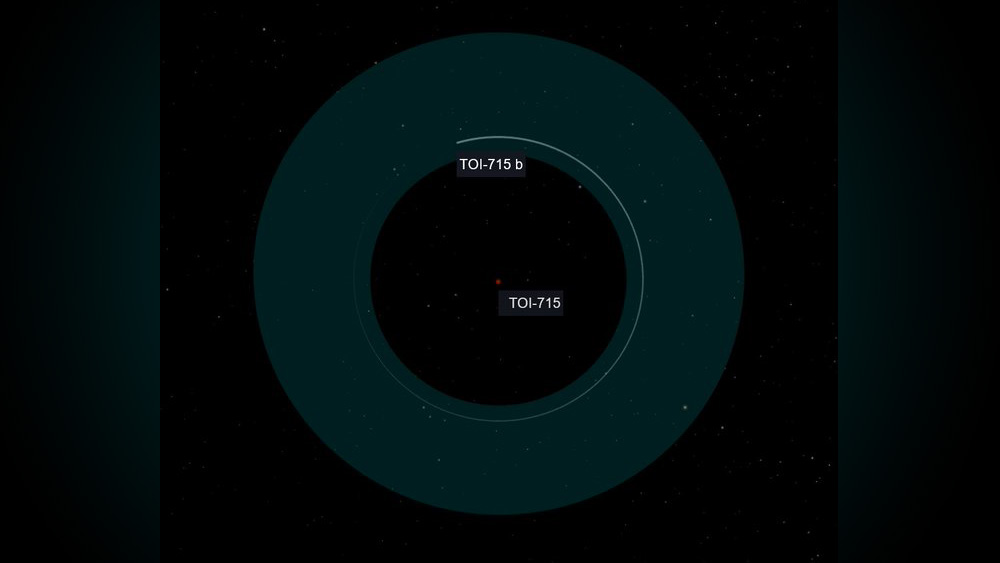NASA says researchers studying exoplanets in space using the TESS space telescope have discovered a super-Earth orbiting its red star's habitable zone. Scientists say one "year" of its orbit would take just 19 days, if comparing time on that planet to time on our own.

On Wednesday, NASA said the newly discovered planet is an exciting find for researchers hoping to investigate the super-Earth that orbits a "small, reddish" star said to be considered "fairly close" to our Earth — from an astronomical perspective, that is.
The planet, called TOI-715 b, is about 137 light-years away from Earth and is thought to be in a system that could hold a second Earth-sized planet, NASA said. The discovery was made by an international team of scientists led by Georgina Dransfield of the University of Birmingham in the United Kingdom.
The team used a list of facilities around the globe to make the discovery, including the Gemini-South, Las Cumbres Observatory telescopes, the ExTrA telescopes, the SPECULOOS network, and the TRAPPIST-south telescope, NASA said.
SEE MORE: 'Little helicopter that could' takes last flight on Mars
Astronauts have opened a new chapter in their search for exoplanets, which are planets that lie beyond our own solar system. And, NASA’s James Webb Space Telescope and the MIT-led NASA mission for the Transiting Exoplanet Survey Satellite are helping to write that story with new discoveries.
TOI-715 b's red dwarf parent star is smaller and cooler than our sun. It is the comparison of these new environments that helps scientists understand how and if they might find other "habitable" planets.
Scientist have found that during the orbit of an exoplanet, it can "cross the face" of the star it orbits. This phenomenon has helped scientist detect those exoplanets with more ease when viewing with space telescopes, while these star-crossing planets are "transiting."
Last year, researchers said they had only discovered a handful of super-Earths that cross the face of their stars from their observational viewpoint.
Researchers define a celestial body as a super-Earth in terms of its size: It has to be larger than Earth and smaller than Neptune. The term doesn't necessarily suggest that the exoplanet is habitable or similar to our own Earth.
Scientists have been adding more and more discovered exoplanets to the database of discoveries since TESS was started in 2018.
NASA says if the second Earth-sized exoplanet is discovered by TESS it would become the smallest habitable-zone planet to be found during the work of the TESS team so far.
Trending stories at Scrippsnews.com


